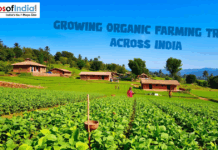Urban plantation can help urban India to tackle pollution?
The smog-filled air, the lush green landscape replaced with concrete jungles, people carrying breathing mask, parks taken over to create parking spaces, playgrounds left barren, this is certainly a haunting spectre for any human but sadly this a sight that people living in the urban clusters of the country will have to bear with.
Indian urban spaces choking
In the last two decades urban centres like Delhi, Bengaluru, Mumbai, and many such metropolitan areas have faced the brunt of climate change, with Delhi being at the forefront of the major environmental problem. The air quality in Delhi has deteriorated to a level that even during the normal days, the air quality is unhealthy enough to cause problems to children and elderly citizens. From being one of the greenest capitals in the world to having contagious air, Delhi’s toxic air is affecting the health of millions of Delhiites. The national capital of India, like many urban cities across the nation, is paying the cost of speedy development and choking itself to feed the growing population. The only way things can improve is to bring back the green cover to ensure that the excessive greenhouse gases can be absorbed from the environment and people can breathe in fresh air.
Urban plantation-the way forward
One way to bring in the change is to adapt urban plantation at individual and community level, as urban plantation is a technique that requires minimum work but helps in cleansing the air within the personal spaces. It helps in improving the quality of air in public spaces as well. For personal spaces like home and office cabin, where the concrete walls and electronic devices emit hazardous gases, these small planters created with the help of recycled products helps in absorbing the impure particles and gases present in the atmosphere. It thereby releases clean oxygen and reduces the risk of developing respiratory problems. While at community level, people can come together and plant native species of the region, as non-native species use excess water and are unable to serve the purpose of cleansing the air. Creating small gardens and forests in an around the locality improves the air quality of that area, as the trees, plants, herbs and shrubs reduces the amount of harmful toxic gases present in the air due to pollution and in return releases fresh oxygen.
The existence of urban plantation and benefits
Although terrace farming and hanging gardens have been a part of the human civilisation since the days of Babylon, it has come back to the fold in the last decade. Civilians, environmentalists, farmers, scientists, have come to terms that it is necessary to bring back the green cover in the urban spaces. Lack of green cover is not only affecting the quality of air, but it is also affecting the aquifers causing the loss of groundwater and many other consequences of climate changes. Urban farming or urban plantation relies on using natural resources and techniques to ensure that chemicals or any inorganic substances are not involved in the plantation. Akira Miyawaki who is considered to be the father of urban farming and forestry came up with the idea of bringing back the forests and green cover back in the urban fold by using native species and using organic methods of farming. As a result, the growth of the plants is 10 times faster, 100 times biodiverse, and 100% organic.
The importance of green spaces in urban agglomerates
Urban green spaces are integral components of urban ecosystems, enhancing the environmental quality, and supporting sustainable urban development. Against the backdrop of a problematic city- culture, the necessity of the green areas within the urban social-ecological system to ameliorate several problems of city-culture has been emphasised by the scientific evidences in the past two decades. Role of parks and gardens has become a priority in view of ever increasing population of cities, particularly in developing countries. Tangible and intangible benefits provided by these green assets are often taken for granted by the public and some city authorities. Like other developing economies, India is moving at a brisk rate towards urbanisation.
Generally, cities of developing countries have a low per capita availability of urban green spaces in comparison to the developed countries. Urban forestry studies, involving technical and social science aspects are lacking in developing countries, including India. Thus, urban plantation can help us overcome the lack of green spaces in the urban areas and help improve the biodiversity in these spaces and improve the quality of life.
You May Like this……….
Most Polluted Cities in India
Pollution in Delhi after Diwali Celebration
How can Delhi bring down its pollution levels?
Air Pollution in Delhi is Caused by Vehicles
Pollution in Delhi: Industrial Units Choking Residential Areas
Vehicular Pollution in Delhi and Its Impact on Lotus Temple
Plastic Pollution: A Threat to Ecosystem
Air pollution in India
River Pollution in India
Pollution Control in India






